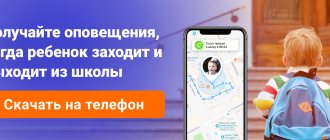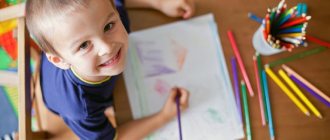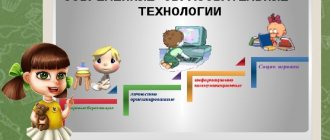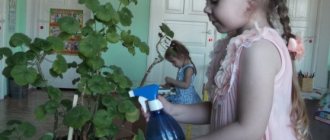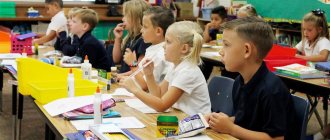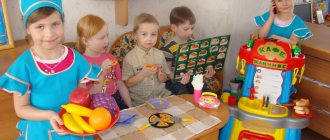In September 2022, changes appeared in the Education Law. Now education will give students not only knowledge and skills, but also instill moral and spiritual values that will become the basis of personality. To do this, teachers of educational institutions need to strengthen the educational part of the programs so that they meet the new requirements of the President. In the article we will discuss the essence of the requirements and how to implement them in kindergarten.
Federal Law No. 304-F dated July 31, 2020 caused a mixed reaction from educators. The question arose whether this situation applies to kindergartens, if the preschool program already includes educational work. It is even more difficult to single out purely educational moments, because they are closely related to educational ones. However, the law was introduced to place emphasis on the socialization and development of children in organizations, including kindergartens.
Changes in the law
The new federal law supplemented the previous law “On Education in the Russian Federation”. Briefly about the changes.
The concept of “education” has changed. In kindergarten, it is necessary to cultivate a sense of patriotism, a caring attitude towards nature, respect for the memory of the defenders of the Fatherland, for work and the older generation, for the laws and for oneself.
The definition of the educational program was specified. The program must include separate blocks of education and a calendar plan of educational work. The law allows organizations to independently develop the structure and content of the work program, therefore the pedagogical and parent councils of the kindergarten must work on the creation of modules.
We set deadlines for implementing changes. The law came into force on September 1, 2022, and by September 1, 2022, educational programs of kindergartens must already comply with this law. The state will verify compliance with the requirements during state accreditation.
They were required to tell parents about the changes.
Kindergarten staff should inform parents about the new curriculum focus.
On the one hand, these changes will make it possible to effectively combine educational processes in kindergarten and in the family. On the other hand, raising and educating children are inseparable, so there is no obvious point in separating the parenting plan into a separate document. However, state requirements cannot be ignored, because education has become a mandatory part of the educational program. Let's figure out how to implement innovations.
Psychological characteristics of preschool children
After the crisis of three years and entry into preschool childhood, the child begins a stable, relatively calm period of development. The child can now choose his own activity, freeing up the adult’s attention. The initiatives and proposals of an adult no longer cause a storm of protest in the child. And, as before, the child needs support, encouragement for his efforts and respect for his needs. In his behavior, a preschool child is already more restrained, the ability to act thoughtfully appears, and not following the lead of his momentary desires, as was previously the case.
Along with the fact that the child is still quite dependent on the adult, his level of independence is constantly increasing. It is necessary to support his aspirations, demonstrate respect for his opinion, his interests. It is in this way that in raising a preschool child, conditions are created for the formation of such personal qualities as independence, determination, and initiative. The development and education of preschool children should also be carried out taking into account the characteristics of the cognitive sphere of children of this age.
The amount of material that a child can remember increases, but his memory is even more involuntary. That is, what is interesting to the child is remembered, what evokes an emotional response in him.
The preschooler's perception becomes more meaningful. The child correlates new information about the surrounding reality with past experiences. This allows him to move from visually effective forms of thinking to visually figurative ones. The development of thinking in a preschool child is aimed at developing the ability to analyze, compare objects, and establish connections between them. Thus, the prerequisites are created for developing the ability to draw conclusions and generalize the experience gained.
How to meet the new requirements
Federal laws do not indicate how to develop an educational program, so we will describe a rough plan.
Tell teachers and parents the details of the innovations
Teachers will have to develop certain qualities in children, so organize a teachers’ council and discuss the details of the new law. Educators must understand the main goal of the resolution - to educate a versatile and responsible personality based on the spiritual and moral values of the peoples of the Russian Federation, historical and national-cultural traditions.
Parents of preschoolers should be aware of all changes in educational activities; familiarize them with the new provisions. To do this, post information on the kindergarten website, information stands, prepare a presentation and tell them at a parent meeting how teachers will carry out educational work. Inform the parent committee that it can participate in the creation of the educational program.
Assign a group to create an educational plan
The manager must issue an order and approve the regulations on the work of the initiative group. It can include teachers and parents of students. Organize work meetings for them to work together.
The initiative group will have to study the educational program of the kindergarten and highlight educational aspects in it, and then think through the structure of the educational program, which will correspond to the main program of the kindergarten. To distribute the load and avoid burnout due to increased workload, assign people responsible who will develop individual program components by a specific deadline.
As a result of this work, the initiative group must present to the team a draft program with recommendations for introducing new educational tasks into the work programs of teachers of different age groups.
Approval and control of the annual plan
When a new annual plan has been drawn up, all tasks have been spelled out and their executors have been appointed, you need to agree on the final version of the plan. Usually it is agreed upon with the teaching council. To do this, send an electronic version of the plan to employees the day before the meeting so that they have time to familiarize themselves and prepare their proposals and questions. If disagreements arise at the meeting, revise the plan accordingly. If the teaching council has no objections, put the stamp “Approved”.
After the plan is approved, new tasks must be communicated and instructions issued to everyone involved in their implementation. Then you can post the annual plan on the official website. If you decide to publish it, please exclude from the public version any information that should not be shared publicly. For example, information about working with official documentation or details of the anti-terrorist protection plan for preschool educational institutions.
Once the team begins implementing the plan, monitor its progress at a monthly meeting. To do this, it is convenient to create a checklist in which employees will note what they have completed and what they have not. In this sheet you need to register the reporting activities, performers and deadlines.
If you found this article helpful, please rate it on the star scale below, with 5 stars being very helpful.
We want you to read only interesting materials, and we will be grateful for your feedback!
Moral education of preschool children
A preschool child has the opportunity to communicate with a large number of people. His experience of interacting with others in various situations also becomes more diverse. And it is precisely in preschool age that the understanding comes that there are rules of behavior common to everyone, certain standards of morality. By playing and communicating with peers, a preschooler learns to understand the feelings of other people, react to them correctly, and evaluate his actions.
For the child, such experiences as sympathy, resentment, guilt, pride and others become clear. He can clearly understand what is good and what is bad.
Education in preschool age should help the child, by analyzing the experiences of others and his own, to understand what a model of moral behavior should be. It is worth recalling that the best model of behavior is the child’s parents. Therefore, parents of a preschooler should try to be a worthy example for their child.
Teaching children to learn
It is impossible to prepare for any one profession, if only because it has not yet been invented. This means that the most important thing is to teach children to learn and develop character qualities that will be useful everywhere.
Soft skills and emotional intelligence are popular today. But does everyone understand what it is, how to develop it and, most importantly, how it will help children in adulthood?
Neuropsychologist Erin Claybow says that emotional intelligence is, first of all, the ability to empathize. Empathy, the second name for emotional intelligence, comes in two types: emotional and intellectual. It is impossible to teach the first: tears or joy for another person are simply a reaction of our limbic system. But the second one is a real “superpower”. By teaching a child to understand how another person feels, we give him the power to literally “penetrate” his consciousness. What does this give? Oh, there are tons of possibilities here! This includes analyzing the causes, predicting results, the ability to find a common language with anyone, and adapting to the interlocutor or the situation so that everyone wins, understanding one’s own feelings, and building personal boundaries.
The main advantage, according to Professor Claybow, is that intellectual empathy allows a child to predict the future. There is no magic: knowing how your interlocutor feels, it is easier to find words to support him, console him or, conversely, put him in his place, without unnecessary melodrama and conflict.
How to teach this? And again, nothing supernatural. Start with the basics: discuss how the heroes of fairy tales and cartoons feel and what they are thinking now, and then ordinary people from everyday circles. How can you help in a difficult situation? What would the child do if he were in the place of the one who got into trouble? How will the hero most likely behave and why did the child make this conclusion?
Digital hygiene
What are parents' biggest fears in the face of technology? Once they get sucked in like that, you can’t get them out. That virtual reality will become more attractive than real life. That someone out there, inside the global network, can deceive or offend a child.
So, playing together is also an excellent prevention. How will a child understand that this is an aggressive and angry game if you leave him alone with it? How will he know that enough is enough if you yourself are constantly “surfing”? How will he learn to recognize deception and bad intentions online if the interlocutor on the other side of the screen offers him something exciting, and you don’t ask anything at all, except whether the child washed his hands and learned the verse for the matinee?
Technology is a tool that you need to learn to use. In themselves they are neither harmful nor beneficial. And the parent should teach how to use it - by example, devoting time, attention and patience and showing HOW you should really treat this tool.
Technology in education is a beast that needs to be tamed and studied.
You can find out exactly how to do this at the EDCRUNCH 2022 conference.

Psychological game for preschoolers and their parents “Family”.
This game was taught to us by a young girl, a psychologist working at the exhibition site under the leadership of Elena Pavlovna Arnautova.
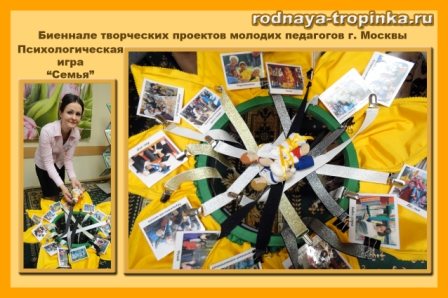
Material for the game. To play you will need a sunflower. There is a round hole in the center of the sunflower. Around it are large yellow petals. Pictures with inscriptions are laid out on the petals: kindergarten, school, sports organizations, volunteer organizations, hobby groups, museums and theaters, library, relatives, work, friends, neighbors, religious organizations, universities, social care authorities and others (you can add to the list ). We also need springy straps with fasteners to fasten to the petals. One end of the belt is sewn to the sunflower petal, the other (with a clasp) hangs free and, if necessary, is fastened to the other side of the sunflower. And you will also need dolls representing a family.
How to play. The player (child or adult) is given a toy family. And then he looks at the pictures on the petals of the sunflower. And pulls/or doesn’t tighten the straps leading from the sunflower pictures:
- If this social institution plays an important role in the family, then the strap sewn next to the picture is pulled tight and fastened with a clasp to the opposite side of the sunflower.
- If this social institution exists in the life of your family, but does not play a very big role, then the strap can also be fastened, but closer, without pulling. The strap is fastened, it is there, but it hangs loose and sags.
- If this social institution does not play any role at all in the life of your family, then you do not fasten your seat belt at all. He's just hanging there.
When all the pictures have been examined and the straps are fastened, we try to put our family on the resulting web. If a family has numerous and strong connections with the surrounding social world, then our toy family lies calmly on the resulting grid of straps. If the family lives too closed, then only 1-3 straps are fastened, and our toy family falls and lies unsteadily. And it will be exactly the same in life.
Such a game has not only diagnostic, but also correctional meaning:
- If a family has few connections with society, then with any destruction of the existing connection (relatives have left, friends have disappeared from their lives, they have been fired from work), they feel unstable and may not survive. If there are many connections, then even if something happens, then relatives, colleagues, friends with similar interests or neighbors will support you. If there are few connections, then we can see what other resources are not used by us? Maybe you should go to the library or join a club at the social assistance department? Or make friends with your neighbors? Or start helping orphanage children in volunteer organizations? The more active a family lives, the more stable it is in this life.
- If there are too many connections and our toy family simply does not lie down, but rises above the sunflower on the mountain, this is also an overabundance. Most often, such families simply lack the comfort of home, sincere conversations with each other, and the whole life of the family goes outside. Then you need to look at what connections should be abandoned or limited so that they do not harm the family.
I really liked how clearly, simply and easily this game shows the family in its relationship with the surrounding social world. I thought about many points and took notes.
Author's methods of preschool education
The issue of finding effective methods of teaching and raising preschool children always remains relevant. Today the most popular methods are:
1 Nikitin’s methodology, which provides for the development of preschool children in the most natural conditions, with an emphasis on stimulating creativity, involving parents in the educational process and ensuring a sufficient level of physical activity for the child.
- Maria Montessori's method, which involves creating for a child an environment that will help him independently explore the world, obtain a variety of information about surrounding objects and phenomena, attaches great importance to sensory development, learning to read, the formation of mathematical knowledge, and stimulation of speech development.
- Glen Doman's method is based on the assertion that a child should learn about the world by becoming familiar with facts.
Any technique aimed at the development of preschool children, with the right approach, can bring results. However, their use should not contradict the interests and needs of the child, his individual characteristics.


